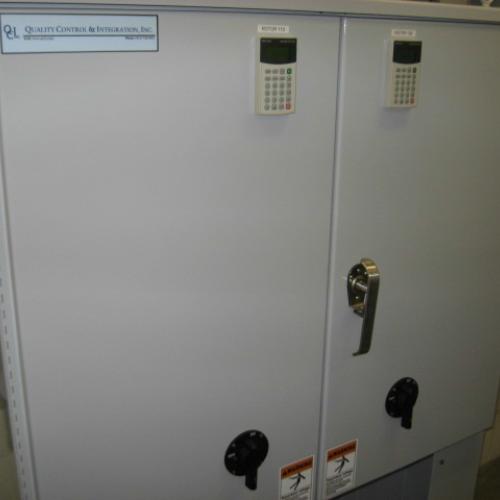Interviewee: John D. Paulson, Environmental Specialist, City of Hutchinson
Interviewer: Lindsay Wimmer, GESP Outreach Coordinator, Clean Energy Resource Teams
The City of Hutchinson used an energy savings performance contract to finance and upgrade the Wastewater Treatment Plant and retrofit to more efficient lighting in their City Hall, Library, Liquor Store, and Recreation Center. Energy performance contracts are a turnkey implementation method to audit facilities, install upgrades, and pay for those upgrades over a period of time with the resulting savings in the operations and maintenance budgets. Further, the energy savings are guaranteed by the energy service company, and if the upgrades do not result in the determined savings, the energy service company is responsible to pay for the difference.
Total Project Cost: $375,114
Guaranteed Annual Savings: $32,571
Actual Annual Savings: $60,272
1. Why was the guaranteed savings and the actual savings for the energy performance contract so different?
The guarantee for the variable frequency drive (VFD) upgrades was calculated conservatively. The ESCO (Ameresco) expected the motors that the VFDs were connected to would run from 100% capacity (highest speed – without VFDs motors either run at 100% capacity or are powered off) to 80% (lower speed), and instead of running at 80% capacity, the variable frequency drives allowed the motors to run from a previous 100% capacity to 30%-35% capacity. The change in capacity is due to the strength of the waste water stream (amount of concentration of waste in the water). Further, in the City of Hutchinson the wastewater stream is weakening or becoming less concentrated.
2. Why did the City of Hutchinson decide to move forward with variable frequency drives, and lighting upgrades?
At the time, financing was limited for the City of Hutchinson. There was a high payback for these projects (4-5 year return). Other projects identified in the investment grade audit were solar, roofs, HVAC, among others.
3. Would you have bundled your projects differently now after going through the process? What aspects of the ESPC would you change or do differently next time?
The true value in energy performance contracts are bundling together long payback items with shorter payback items.
The projects were picked because of their high payback. One barrier to going forward with ESPCs in local units of government is communicating how the ESPC process works to other people, so that they fully understand how upgrades are completed and funded.
4. Were there non-energy benefits? What consisted of the O & M savings in the ESPC?
Yes – the lighting improvements enhanced the aesthetics of the facilities. O & M savings were realized in staff time because less time was spent on motor and light maintenance, and more time was available then to complete other tasks to maintain buildings (these savings were stipulated).
5. Is the City of Hutchinson interested and/or able to complete more ESPCs in the future?
Yes.
6. One tip listed on the CERTs website in the blog about the West Central Energy Efficiency Financing Event is use the State for help – Would you add anything specifically to that thought?
There are critical points when going through an Energy Savings Performance Contract that are key for a LUG to understand and frame well to have a successful experience. If the local unit of government does not have experience with ESPCs, the technical skills to negotiate a contract around Measurement & Verification, or the confidence that the selected upgrades will bring about the necessary savings for the cash flow, the Guaranteed Energy Savings Program (GESP) brings in people that have experience with energy performance contracts to help the local government through the process. GESP levels the playing field so decisions are made during those critical points during an energy savings performance contract that further guarantee a successful project. GESP works as a bridge between the interests of the local unit of government and ESCO, through the technical and contractual assistance provided by the state.
Learn more about the Guaranteed Energy Savings Program (GESP) here.


